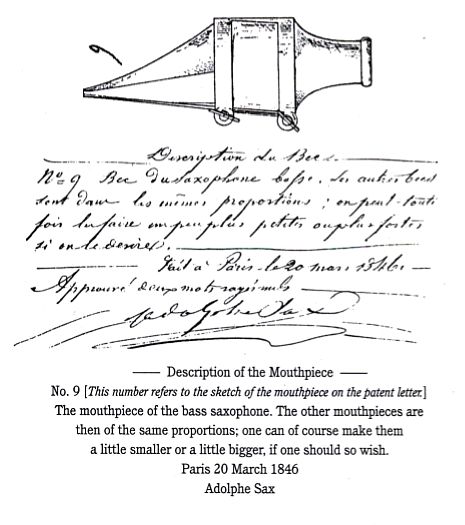“The ability to play an instrument is not inherited. It can neither be donated, nor can it be bought. It must be acquired. This is done, in a healthy situation, through the free will of the player. That is: choice, aim, and decision are essential in the quest for ability and knowledge.”
- Sigurd M. Raschèr
The Original Patent of the Saxophone Mouthpiece
DESCRIPTION OF THE MOUTHPIECE. No. 9 (this number refers to the sketch of the mouthpiece on the patent letter). The mouthpiece of the bass saxophone. The other mouthpieces are then of the same proportions; one can of course make them a little smaller or a little bigger, if one so should wish.
The Story of the Saxophone
Why did Adolphe Sax ever make the saxophone?
Guesses have been as cheap as they were plentiful. One writer asserted that it was more or less a chance development from the serpent (Darwinism in instrumental evolution?), while another suggested that the inventor, “playing around” in his shop, put a clarinet mouthpiece on a bugle, blew it, shouted “Eureka!” and pronounced himself a genius; etc. Nothing could be further from the truth.
The Voice of Sax
When Adolphe Sax set out to construct a new wind instrument, it was the concept of a tone that hitherto did not exist that fired his will. He clearly knew what characteristics this new tone must have. It should be capable of binding the existing tones into a more homogenous unity. Only a few years after his “dream” had become a tangible–and audible–reality, he documented his aims in concise words.



